Editor’s note: This article was originally published on November 18, 2021.
Having an air compressor in the garage makes so many jobs easier, including the most-obvious task of inflating tires. Or footballs. But there’s a lot more to it than that.
The tire (or football) inflation in itself makes a home compressor worthwhile. Really, who wants to schlep down to the convenience store to feed quarters into their bitty machine? Yes, children, there was a time long ago when air was free.
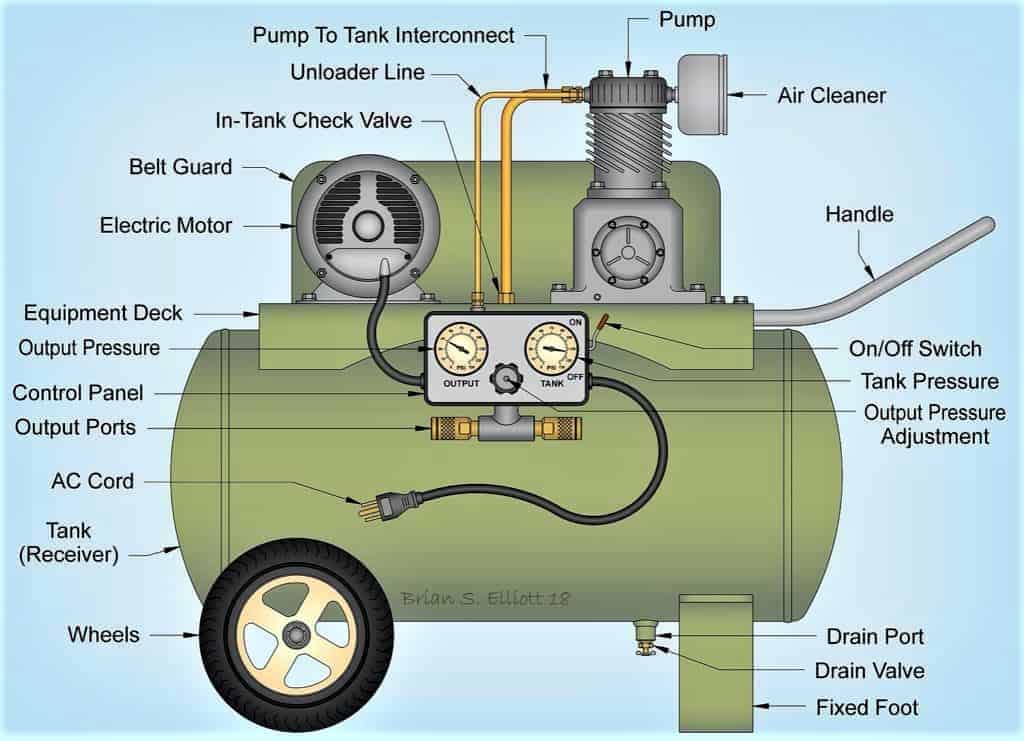
But there are so many other chores that can be accomplished with an air compressor, particularly those involving cars, trucks and motorcycles. Compressed air provides extra muscle and versatility, and there are a myriad tools and pieces of equipment that operate efficiently via the power of air.
Compressors come in many shapes and sizes, from the massive units seen at auto shops to scaled-down versions for home use, and all the way down to small portable compressors that run on your vehicle’s 12-volt system, made specifically for filling tires.
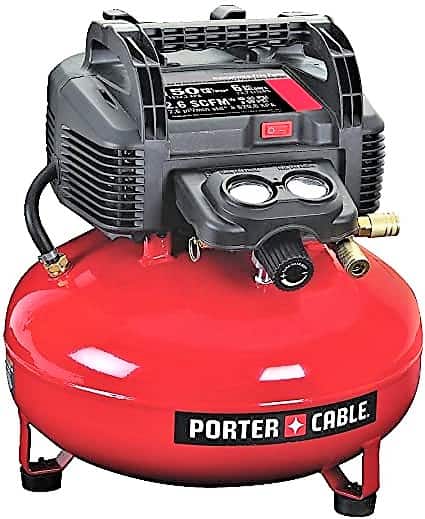
You’ll often see contractors and construction crews on the job site equipped with small-capacity compressors capable of containing a few gallons of air generated by the attached electric pumps. These most often are used to provide immediate, short-burst power for such tools as nail guns and staplers.
For a home garage, a somewhat bigger compressor with larger capacity should be considered so that there’s more air contained in its tank for continuous use. That way, the pump motor is not constantly – and noisily – running, which also makes it wear out faster.
My garage contains a fairly typical home-garage compressor with a 25-gallon tank that can generate as much as 130 psi, runs on 120-volt house current, and draws 15 amps. Easy and convenient, it stands against the wall and, when cranked up, will fill the tank in about five minutes, with a pump that is maintenance free.
There are bigger and much-bigger compressor/tank combinations, some of which require 220 volts and sometimes special high-capacity wiring, but that’s generally overkill for the home auto hobbyist.
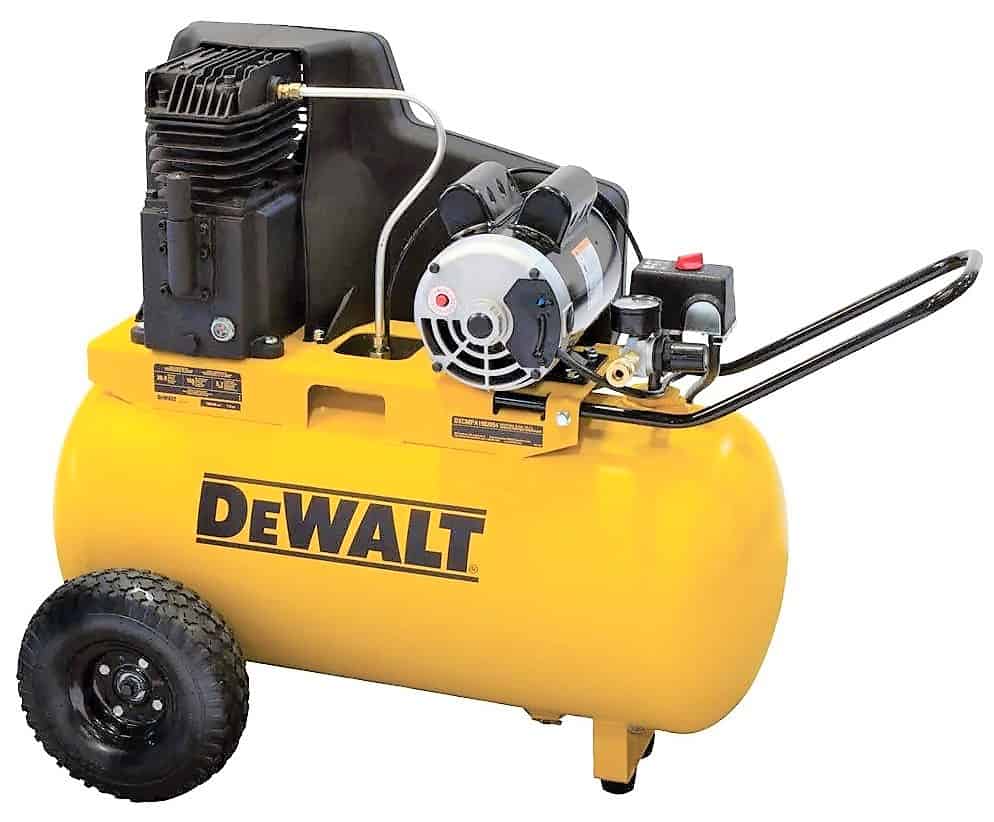
I originally got my compressor (actually, a Christmas present from my dear wife) so that I could power an impact socket wrench and, of course, inflate tires and such. But compressed air can be used for so much more, as I gradually found out.
Here are a few of the things that can be done with an air compressor:
Cleaning things. With a blow-gun nozzle attached (hand actuated by a lever), high-pressurized air can be used to blow the dust and grit out of many things, including screens and filters. Most usefully, it can be used to blast out those little niches and crevasses in your car’s interior way more efficiently than a vacuum alone.
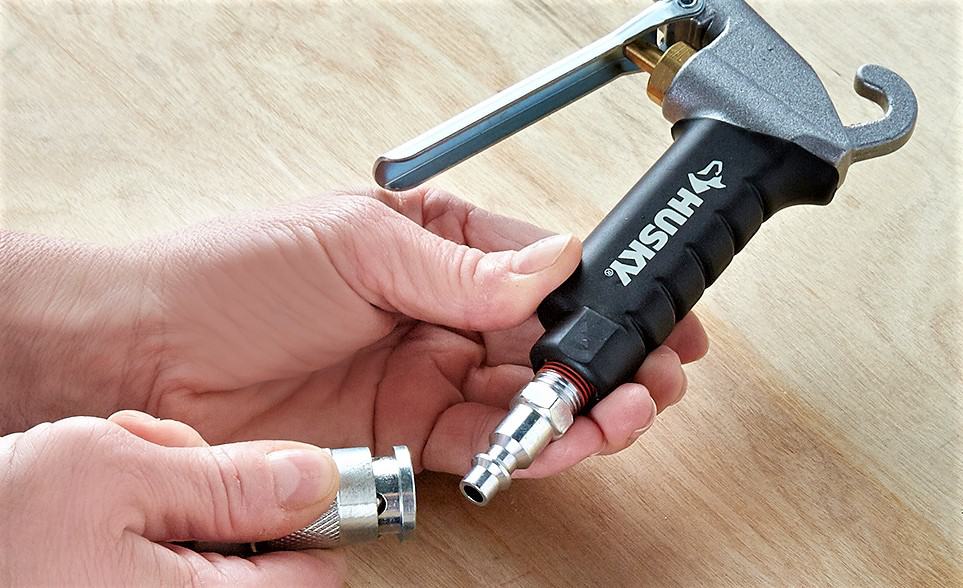
If so inclined, you can even blow dirt and leaves out the door, or clear away sawdust. I have an extra-long hose attached to my compressor, which I occasionally run into the house to blow off accumulated dust (we live in the desert). Sure, I know that’s a real Tim Allen/Tool Time (or maybe Red Green) solution, and I hope you don’t think less of me for it.
Powering pneumatic tools. Besides the aforementioned impact wrench, there’s a wide assortment of automotive hand tools that can be hooked up to the compressor, such as powered ratchet wrenches, grinders, rotary saws, sand blasters, drills, grease guns and air brushes.
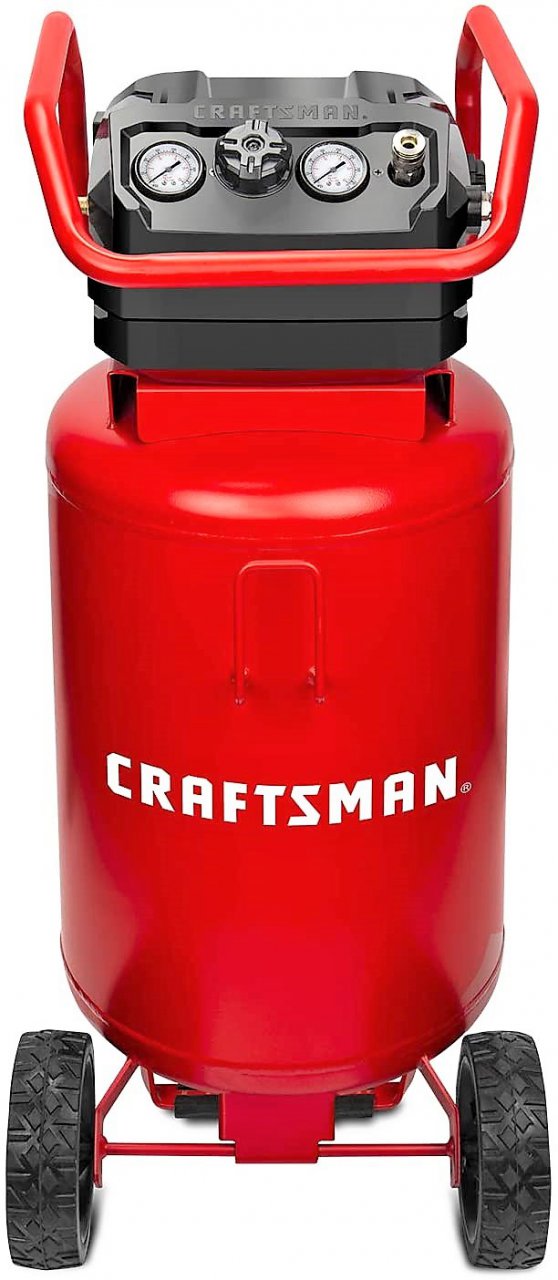
Some of those would require a compressor with the higher air-storage capacities. My 25-gallon unit would suffice for most. Although, running low on compressed air is a good excuse for a short beer break while the pump refills the tank.
Spray painting. Compressed air is the way to go for achieving a professional-quality paint job, from small items to entire vehicles. Practice is important, so if you’re a newbie, you might try out your nascent skill on a disposable piece, such as an old car hood from a junkyard. And don’t make the rookie mistake of trying to paint with air pressure that’s set too high. That’s a recipe for a mess. There’s plenty of detailed instructions about spray painting available online.
Pressure washing. Compressed air can be used to pump water through a specialized device to pressure wash driveways, equipment, even vehicles.
Blowing up things. OK, you can’t discuss air compressors without talking about inflation, which might be a dirty word economically these days but still the most notable use of a compressor. Car, truck and motorcycle tires would be the obvious targets, and a moderately sized compressor, at least, makes the job easier, especially with big truck tires containing large volumes of air.
But how about the other things in life that require inflation, such as that football? Or basketball, volleyball, beach ball, pool toy, etc. For the flimsier objects, such as beach balls and pool toys, a judicious use of the pressure gauge is required so that you don’t explode them.
Same with bicycle tires, which can too quickly blow up beyond their capacity because of their small air volume, especially skinny tires on lightweight road bikes, for which a regular hand pump would be the more-judicious alternative.
I’m sure you can conjure up, and most likely already have, other ways to use your air compressor. If you would like to share your ideas, add them to the comments section below.



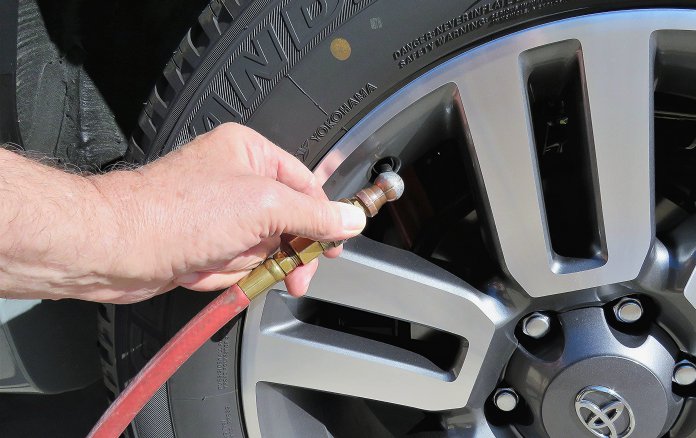


It is important to take into consideration what are you going to do with the compressor. Various different tools require a certain amount of air volume to operate. A grinder may require 8-10 cfm ( cubic ft per minute) you need to look at the tools you are going to use to determine the size of the compressor you buy. Another thing to look at is what stage size. A 5 hp single stage may give 7 or8 cfm verses a 2 stage may give 17 cfm . Of course this comes with a dollar and size and power requirements. A general rule of thumb is to fill tires almost any compressor will do but if you going to do your own maintenance make sure you get one that is big enough to do your job and you have the power to run it. Also if your painting get a water separator and regulator with it as most paint guns work on 90 psi
For convenience, hard to beat a handheld inflator that shares a battery with other tools. Gray for bikes, powerful enough to bring car tires up to spec.